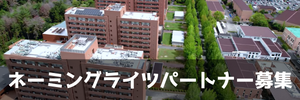(English announcement can be found in the latter half of this notice.)
広島大学バイオマスプロジェクト研究センターと中国地域バイオマス利用研究会の共催で広島大学バイオマスイブニングセミナーを開催しています。バイオマスに関する基本的な考え方から最先端の情報までをカバーして、この地域におけるバイオマスの活動に資することを目的とするものです。第78回を以下の日程で開催しますので、ご参集下さい。
日時
2019年10月7日(月)16:20~17:50
会場
広島大学東広島キャンパス工学部110講義室
広島大学 東広島キャンパス
https://www.hiroshima-u.ac.jp/access/higashihiroshimacampus
工学部 建物配置図
www.hiroshima-u.ac.jp/eng/access/building
工学部 講義室配置図
www.hiroshima-u.ac.jp/eng/access/lectureroom
プログラム
講演: 広島大学大学院工学研究科 D3 Puji Rahmawati NURCAHYANI
「超臨界ガス化における微細藻類分解の反応速度」
バイオマスはエネルギーを得るための再生可能資源です。その中でも、単細胞で光合成を行うバイオマスである微細藻類がバイオオイルのエネルギー源として紹介されました。しかし、超臨界水ガス化条件下でのガス化エネルギーを作るための可能性は明確にする必要があります。そこで、我々は連続式反応器を用いた600 oC, 25 MPaでの水中での微細藻類の分解について調査しました。その結果は、気体生成物だけでなく液体生成物が主な生成物であることを示しました。また、チャーやタールも同様に発見しました。そこで、我々は起こっている反応を、二次反応として表わされるタール状の物質を除いた一次反応として想定したモデルを構築しました。また、そのモデルのそれぞれの反応に対する反応速度も決定しました。
講演:広島大学大学院統合生命科学研究科 B4 伊藤 嘉泰
「木質バイオマスの高濃度モデル化合物での超臨界水ガス化」
バイオマスの使用を検討し、木質バイオマスのモデル化合物としてグルコース、キシロース、グアヤコールの混合水溶液を使用して、超臨界水ガス化の影響を調査しました。以前の研究では、グルコース、キシロース、およびグアヤコールの濃度は0.1 wt%で行われました。しかし、0.1wt%では濃度が低く実用性に欠けていました。そのため、本研究では、濃度が5wt%の混合水溶液を用いて、超臨界水ガス化の影響を研究しています。
講演:広島大学大学院工学研究科 M1 吉岡 大視
「竹におけるメタノール処理に関する研究」
現在、化石燃料から発生される二酸化炭素などによって地球温暖化が問題となっています。そのため注目が集まっているバイオマス資源の一つである竹にこの研究では着目しました。この竹をバイオマス資源として利用することが可能となれば大きなエネルギーとなります。しかしながら竹をそのまま燃焼させてしまうと竹に含まれるカリウムからクリンカーが発生してしまいます。そこで、クリンカーを発生させないために竹に含まれているカリウムを取り除く必要があります。
講演:広島大学大学院工学研究科 M1 廣瀬 佑太
「ペレットストーブの改善に関する研究」
本研究では、再生可能エネルギー、その中でもバイオマスエネルギーの木質ペレット燃料に着目し、この燃料を利用した暖房器具であるペレットストーブに着目しました。ペレットストーブは一般的に家庭で使用されるエアコンや石油ストーブと比較して再生可能エネルギーである木質ペレット燃料を利用しているという点は良いですが、使用していく上で様々な問題点や改善点を持っています。まず、ペレットストーブから排出される排気ガスは多くの熱を持ったまま排気管を通して屋外へと排出されており、ペレットストーブのエネルギー効率低下の大きな原因となっています。また、排気ガスにはススや健康に害を及ぼす可能性のある気体が含まれており、住宅街などで使用するとなると使用者はもちろんのこと、近隣住民へ害を及ぼす可能性があるといった改善すべき点があります。そこで本研究では、ペレットストーブの物質収支やエネルギー収支をもとめ、現在熱エネルギーがどのような原因で無駄となっているのかを確認しました。また、ペレットストーブの排気ガスに含まれるすすを回収し、どのようなすすがどれほど発生しているのかの調査をし、改善策の提案を行いました。
司会・解説:広島大学大学院工学研究科 教授 松村 幸彦
なお、18:00より意見交換会(参加費 800円)を開催します。ご都合の付く方はこちらにもご参加下さい。
The 78th Hiroshima University Biomass Evening Seminar
(The 58th Hiroshima University ACE Seminar)
Biomass Project Research Center, Hiroshima University, and HOSTY Association are co-organizing the Hiroshima University Biomass Evening Seminar. This seminar covers topics from the fundamentals of biomass to the latest information so that it can contribute the activities on biomass in this district. The 78th seminar will be held as follows. Please join.
Date & Time
Mon.7 Oct., 2019 16:20-17:50
Place
Engineering 110 Lecture Room, Higashi-Hiroshima Campus, Hiroshima University
Higashi Hiroshima Campus, Hiroshima University
https://www.hiroshima-u.ac.jp/en/access/higashihiroshimacampus
School of Engineering Buildiing map
https://www.hiroshima-u.ac.jp/en/access/higashihiroshimacampus/aca_7
School of Engineering Lecture room map
www.hiroshima-u.ac.jp/eng/access/lectureroom
Program
Lecture: Puji Rahmawati NURCAHYANI
D3 Graduate School of Engineering, Hiroshima University
“Kinetic rate of microalgae decomposition in supercritical water gasification.”
Biomass is a renewable source for gaining energy. Microalgae, a unicellular photosynthetic biomass, was introduced as biooil energy sources, but its potential to produce gaseous energy source under supercritical water gasification needs to be clarified. We examined the decomposition of microalgae in water at 600 oC, 25 MPa with continuous reactor system. Results showed that liquid product was the main product besides of gas. We found char and tar as well. We developed a model with assumption that reactions taking place are first order reactions except the tarry material production that was expressed as second order reaction. The reaction rate of each reaction in the model was determined.
Lecture: Yoshiyasu ITO
B4 School of Engineering, Hiroshima University
“Supercritical water gasification on high concentration model compound of woody biomass”
Consider the use of biomass, the influence of supercritical water gasification was investigated using a mixed aqueous solution of glucose, xylose and guaiacol as a model compound of woody biomass. In previous studies, concentrations of glucose, xylose and guaiacol were performed at 0.1 wt%. However, at 0.1 wt%, the concentration was low and the practicality was lacking. Therefore, in this study, the influence of supercritical water gasification is studied using mixed aqueous solution with a concentration of 5 wt%.
Lecture: Hiroshi YOSHIOKA
M1 Graduate School of Engineering, Hiroshima University
“Research on pretreatment of bamboo”
Today, global warming caused by fossil fuel is a problem all over the world. Therefore, biomass is attracting attention. Bamboo is attracting even in its biomass. Bamboo is abundant in Japan. And bamboo’s growth is so fast. So if it can be used as biomass, it has the potential to be a great energy source. However, there is a problem when bamboo is burned as biomass. That is generating clinker. Clinker is generated when potassium of bamboo is burned. This clinker stick boiler’s wall, and cause corrosion of boiler. So, we need to remove potassium of bamboo for using as biomass resources. I thought supercritical methanol is effectiveness for pretreatment of bamboo. Because, I thought bamboo’s potassium is eluted by supercritical methanol. The experiments are carried out using supercritical methanol in this pretreatment for the first time. For that reason, I investigated the behavior of bamboo’s potassium by using supercritical methanol. I treated bamboo with methanol and then studied the proportions of inorganic and organic material. Finally, I understood effect of methanol treatment.
Lecture: Yuta HIROSE
M1 Graduate School of Engineering, Hiroshima University
“ The possibility of pellet stove improvement.”
Pellet stove use wood pellet as fuel. The wood pellet is made from sawdust which occurs when making wooden products. So wood pellet is carbon neutral and important to solve the environmental problem such as depletion of fossil fuel and global warming. Therefore it is good idea to use pellet stove instead of devices which use fossil fuels as fuel. However, pellet stove have some problems to use instead of them. For example, the exhaust gas from pellet stove contains much heating value, soot, CO2, CO and some gas which harmful for human health. So it is important to improve these problems. In this research, we considered about mass balance and energy balance. In addition, we researched about soot which contained exhaust gas from pellet stove.
Chair & Commentary: Yukihiko MATSUMURA
Professor, Graduate School of Engineering, Hiroshima University
We will hold the discussion meeting from 18:00 (800 JPY needed). Join this meeting too, if you are available.


 Home
Home









